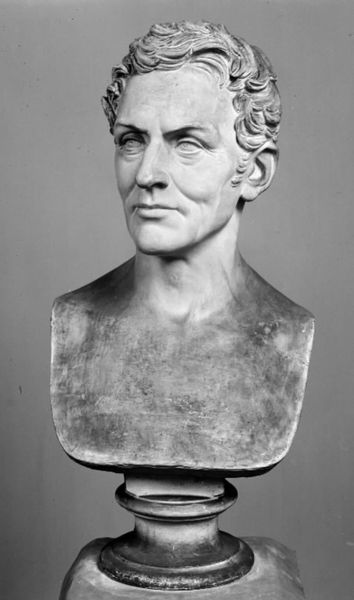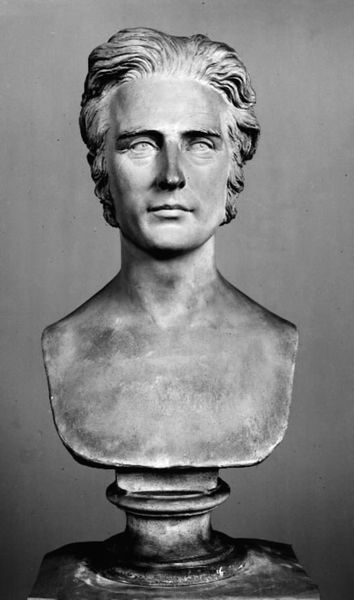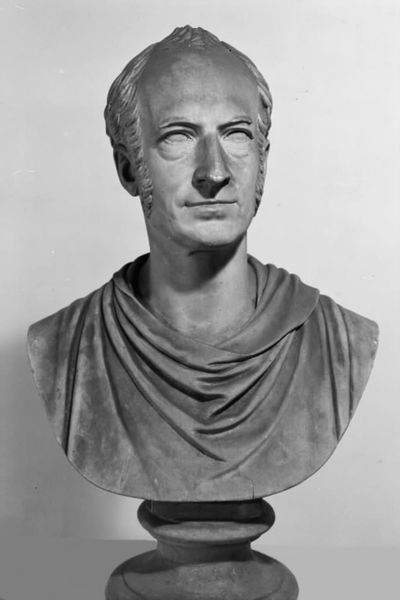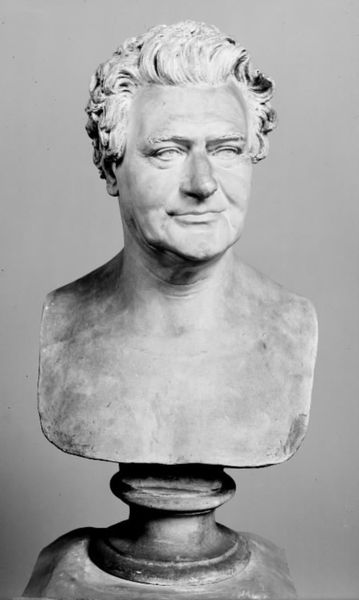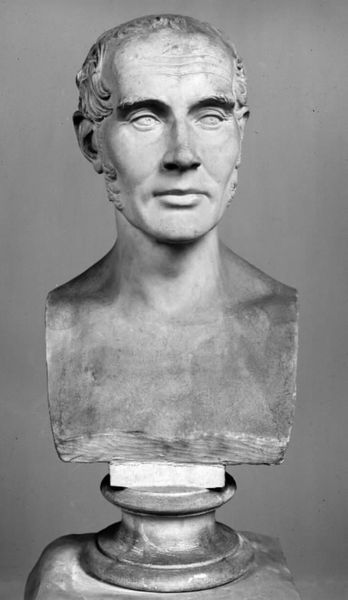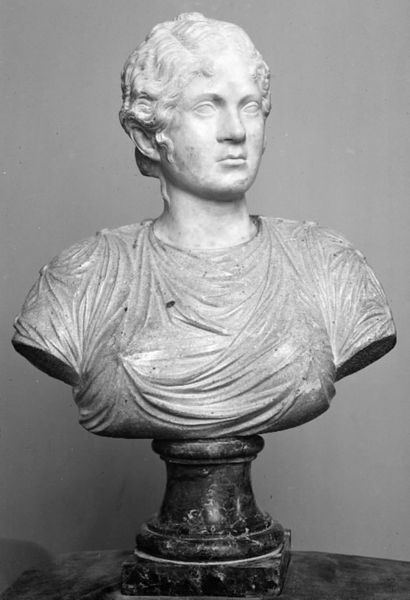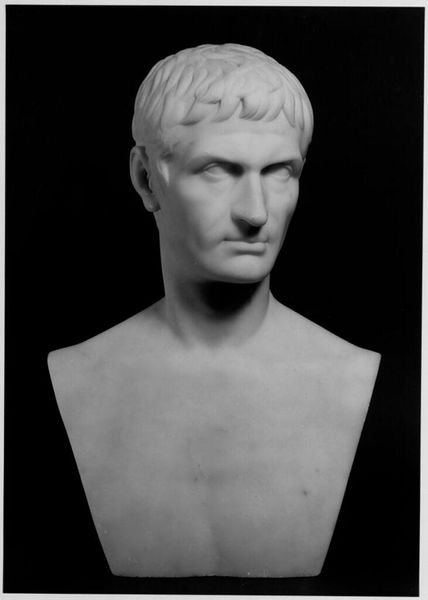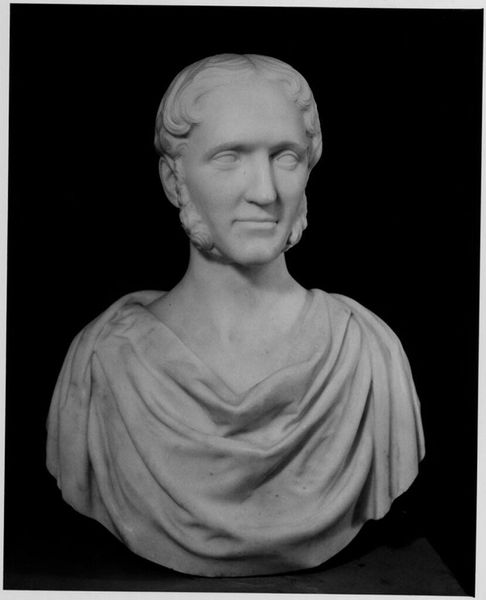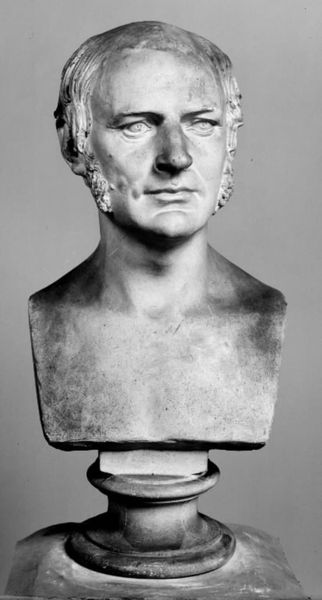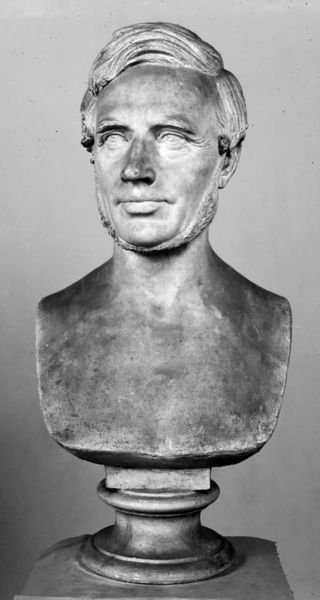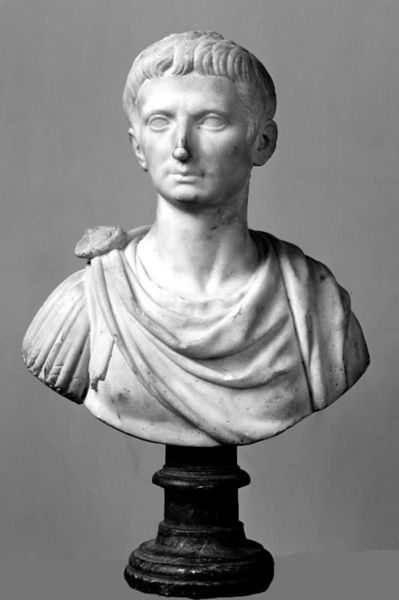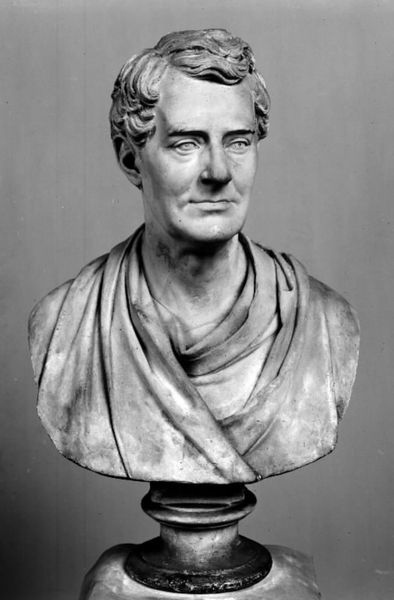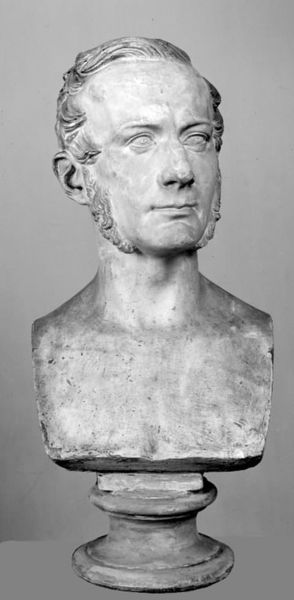
Dimensions: 70.3 cm (height) (Netto)
Editor: This marble sculpture from 1866 is entitled "Pianofabrikant Andreas Marschall" and it's by H.W. Bissen. It’s quite striking in its simplicity. What details stand out to you in this work? Curator: The stark whiteness of the marble immediately signifies a formal aspiration, harking back to the classical ideal. Notice the economy of line and the smooth, uninterrupted surfaces. Bissen skillfully renders form and volume with minimal textural detail. Observe, too, how the artist uses light and shadow to define the planes of the face, lending a sense of noble reserve. Do you notice how the turn of the head and the set of the jaw convey character? Editor: Yes, he seems to be both dignified and a little stern. Is the smoothness of the marble typical for sculpture of this period? Curator: Indeed. The polished surface, free of tool marks, was considered essential for conveying timelessness and purity, values central to neoclassical aesthetics. The form aspires to an ideal; in contrast to Romantic notions, the materiality is minimized through technique and surface. Do you find that the artist succeeded? Editor: Absolutely, I can see that. It's amazing how much expression Bissen could achieve while adhering to this specific form. I had previously thought Neo-classicism felt very uniform in the rejection of emotion but I think the sculpture’s surface provides detail that contrasts my expectations. Curator: Precisely. The formal constraints ultimately allow the sculptor to explore more subtle means of expression through structure. Editor: That's a great point. Thanks, I will certainly remember that in my approach to assessing Neoclassical portraiture.
Comments
No comments
Be the first to comment and join the conversation on the ultimate creative platform.
